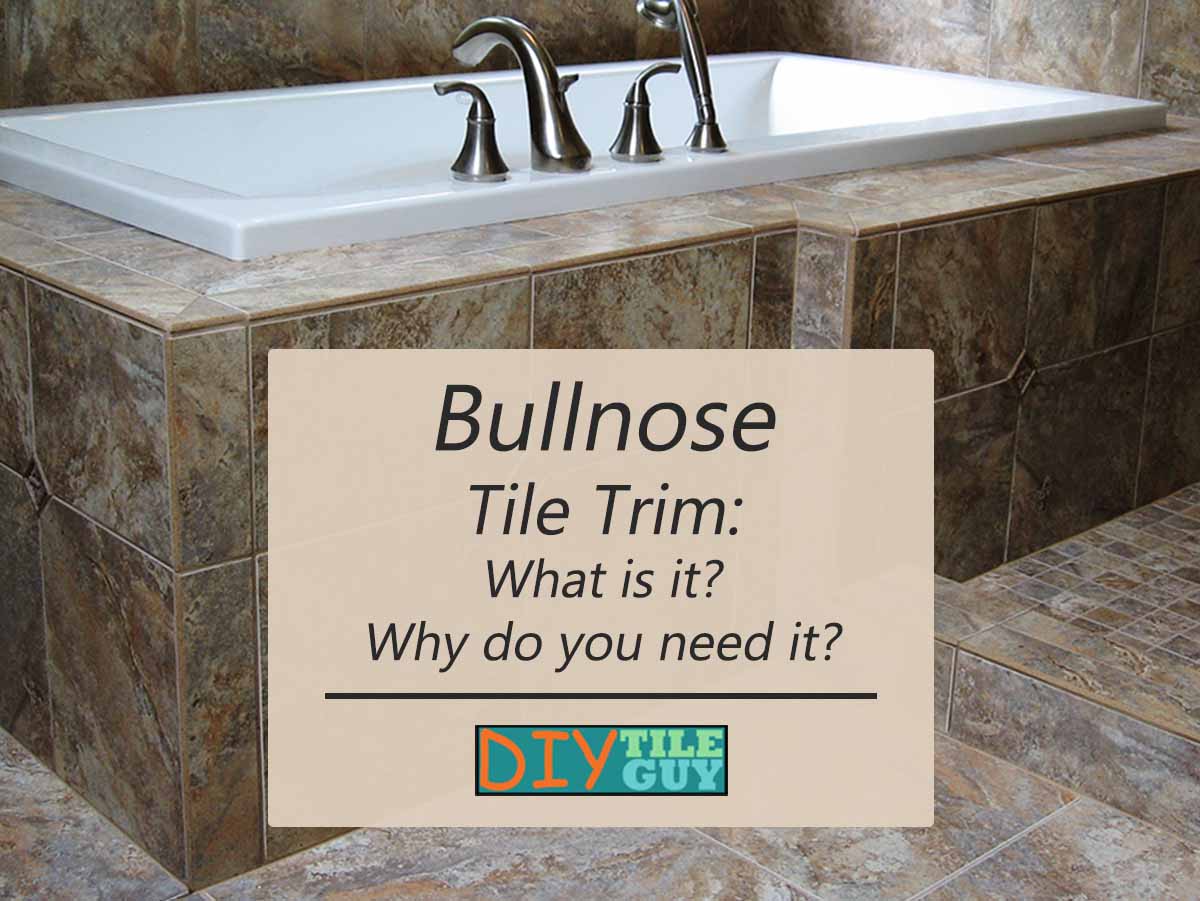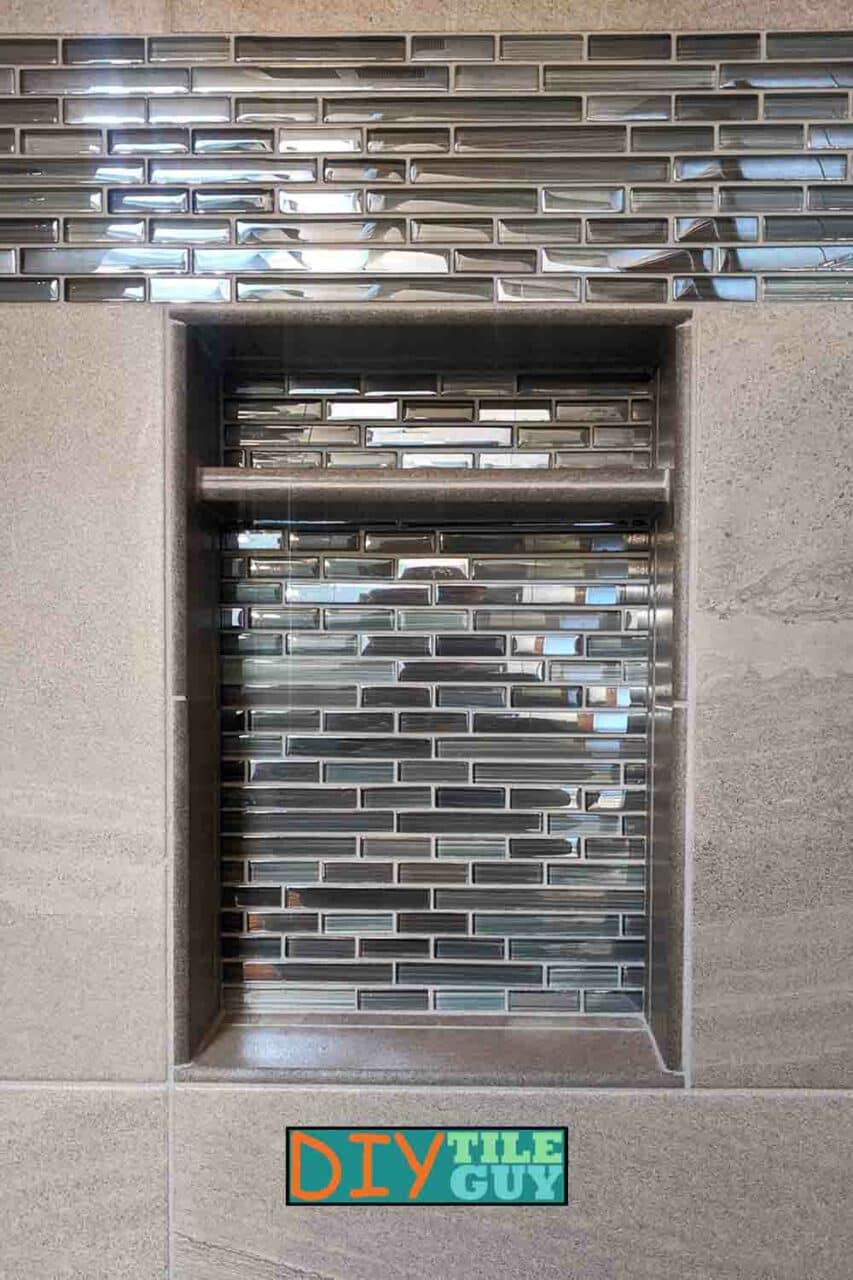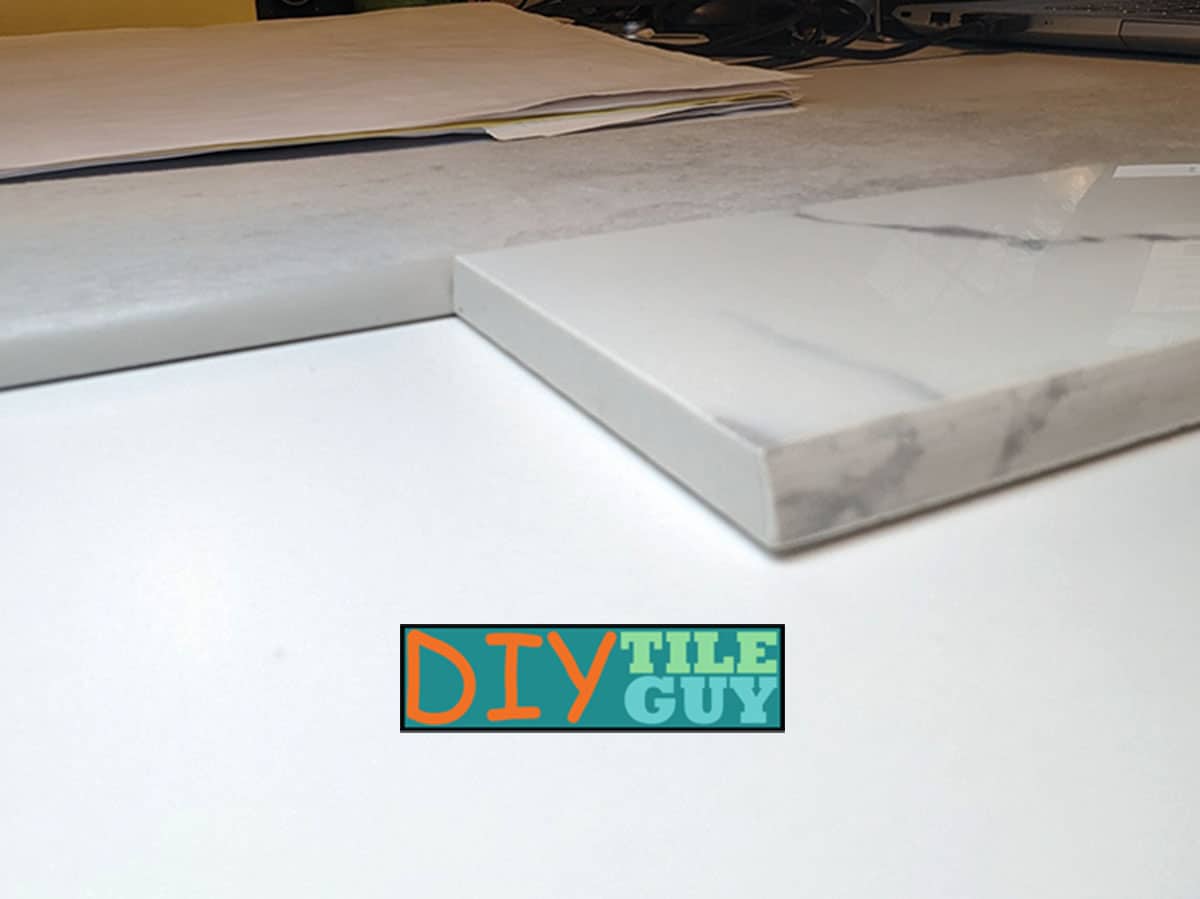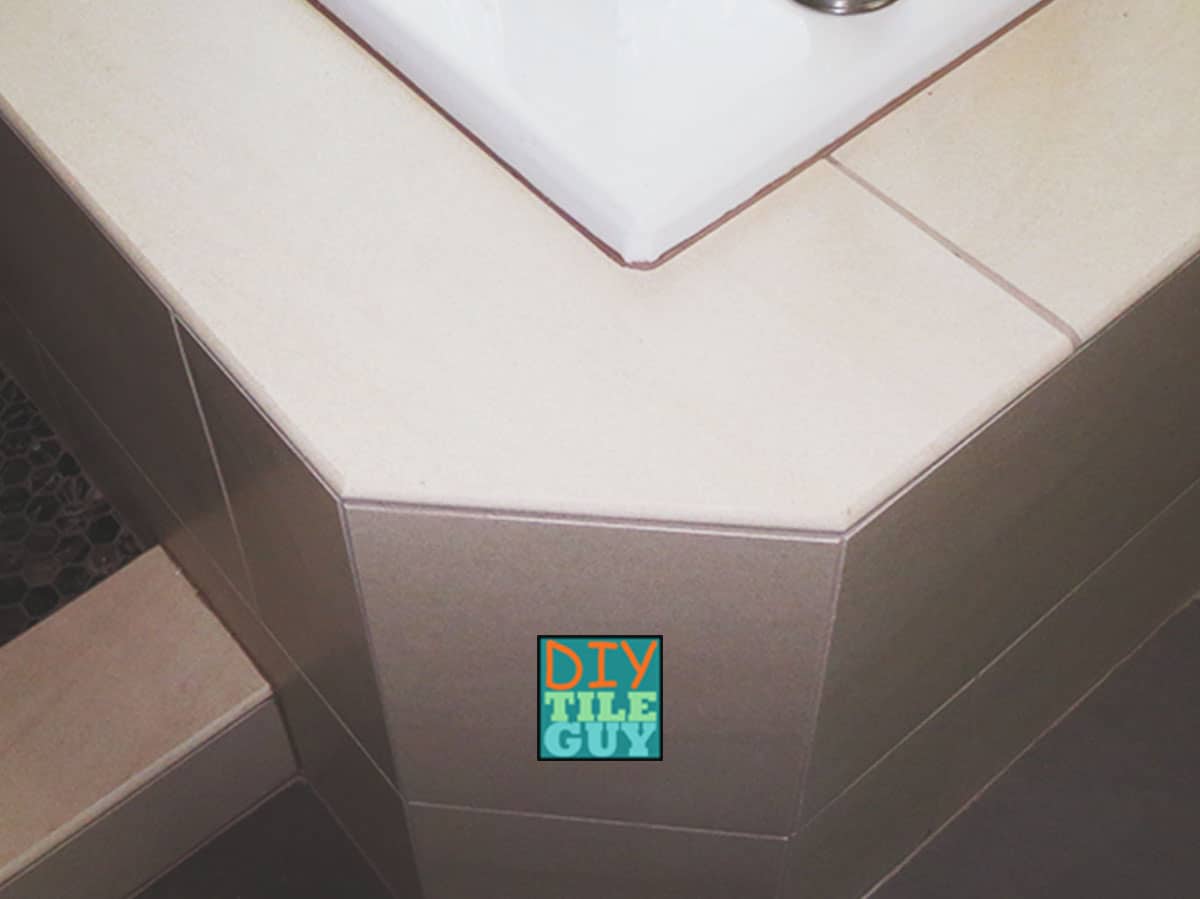You need to trim the edge of your tiles and bullnose trim is the most common way of doing it. In fact, not having tile edge trim is a great way to make your tile look like an amateur did it.
This post will discuss:
- What the heck bullnose tiles are
- Where you put them
- Making your own
- Being outdated
Without further ado;
Estimated reading time: 8 minutes

What is a bullnose tile?
Who knows where the name came from but bullnose trims are tiles with a rounded edge. The edge should be glazed and look finished. After all, it is a trim tile.
What is bullnose tile used for?
You can’t just leave the ugly edge of a tile exposed so that everyone can see it. You need to finish off the edges. That’s where bullnose comes in.
They’re designed to be placed on the ends of the tile and you look at the rounded edge rather than an unfinished tile edge.
Where bullnose tile goes
So, what applications are we talking about? Here are some examples:
End of a wall
The end of a wall is a great example. You can’t have the ugly, unfinished tile sides at the end of a wall. So you use the bullnose trim pieces at the end.
Top of a wall
Let’s say you have a wainscot of tile on your wall. Bullnose tiles would be placed at the top of the wall for a nice finishing touch.
This post can help you measure the amount of bullnose trim tiles you might need for this application.
Around a shower niche
When you tile around a recessed shower niche the unfinished tile sides will be exposed. This is another place you want to place your trim tiles to finish off the edges.
One potential drawback in this scenario is that many bullnose tiles are 2.75 inches wide and shower niches are recessed 3.5 inches deep. This means that you would have a grout joint and small piece of tile in the back of the niche.
This may, or may not, be something that bothers you so plan accordingly.

Shower curb
With shower curbs, you’re going to have two rows of trim tiles. This post can help with calculating how many bullnose tiles you need for a shower.
Tile Bench
It’s quite common to have bullnose tiles on the front edge of a tile bench in a shower. If it’s a rectangular bench then the trim tiles might go vertically on the corner, as well.
Half wall
If you have a half wall in a shower then you will have a good number of bullnose pieces to finish the exposed tile edges.
Again, this post can help you measure how many trim pieces you will need for a half wall.
Bullnose tile baseboard
A great use of bullnose trim pieces is around the perimeter of a bathroom. Rather than put wood baseboards (or worse, MDF pressboard) around the perimeter of the floor, a lot of people choose tile trim for a finished look.
Outside corner with bullnose
Anywhere tile is on an outside corner is an area that will need trim on the tile edge.
Stair nosing
Finally, the front edge of stair treads should be finished appropriately and standard bullnose tiles are one way of accomplishing this.
Personally, I prefer the Schluter TREP profiles for this application but bullnose tiles are a perfectly acceptable choice for this as long as they can handle being stepped on.
Tile bullnose corner (Double bullnose)
You may have a situation where you need a corner tile. A tile with two bullnose edges.
Double bullnose corner
Sometimes bullnose tiles will also have a double bullnose corner piece. This piece is designed exactly for this situation. It has a finished bullnose edge on two adjacent sides.
For example, some makers of subway tiles will have a full array of supporting trims and pieces to complement their subway tiles. This includes both left and right subway tile corners.

Creating your own corner with two bullnose pieces
If they don’t make any corner tiles, you can make one yourself by mitering two trim tiles. This makes for a ‘pointy’ corner and sometimes care will need to be taken not to have sharp edges or points.
When the bullnose trim tile doesn’t match the field tiles
It’s not unheard of to have a color variation between trim tile and field tiles. Oftentimes, they are made in two different batches and undergo the firing process at two different times.
So, you always want to check the coloring of both the trim and the field tiles to determine if there is a significant color variation, or not. I talk more about this in a post about buying tiles from a big box store.
Solid edge color vs patterned edge
One thing you’ll notice is that many of the trim tiles have a solid color on the curved edge.
So, the face of the tile may be patterned to match the field tile but the edge will be a coordinating, solid trim color.
In contrast, other tile makers will keep the surface color/pattern going through the entire finished edge of the tile.
Why the difference?
I believe that it has something to do with the way they are made. Some manufacturers make the rounded trim tiles on their own whereas others cut them out of the field tile after they are glazed.
Typically, the edge color isn’t a big deal but I have had customers reject the bullnose because of the solid color edge treatment.
Making your own bullnose trim
What about just bullnosing the edge yourself? Under certain circumstances, this can be done. It depends on the type of tile your are considering.
Bullnosing marble, granite, and other natural stones
Any natural stone can have the edges polished to be similar to the finished face. Along these lines, one could round (bullnose) the edge of a piece of marble or granite before polishing it.
Consequently, if you want to make your own bullnose trim pieces out of natural stone tiles this is a great option although it does require some skill and/or special equipment.

Porcelain tile and ceramic tile
Things aren’t as simple with porcelain and ceramic tile.
If you attempt to grind down the corner of a ceramic tile it will rub the finish off. You have then exposed the middle, unglazed portion of the tile and now have unfinished tile edges.
As a result, you can’t make your own bullnose edging on porcelain or ceramic tiles.
Through-body porcelain tile
An exception to the above is through-body porcelain tiles. This is a type of porcelain tile that isn’t glazed on the surface.
Rather, the entire tile is solid porcelain and the same color throughout. These solid-body porcelain tiles can be rounded and polished just like marble and granite.
Again, it does require special skill and/or equipment to finish the edges. For example, I bought a machine that will round the edge of porcelain and natural stone tile.
Is bullnose tile outdated?
Some feel that bullnose tile trim is outdated looking. In some ways, they are right.
As tiles have grown in size and metal edge trims have grown in popularity, the bullnose look just didn’t look clean and minimal enough.
However, the classic looks, like subway tiles, bullnose trim tiles are a perfect edging. Further, the handmade/craft trend is very much alive and flourishing.
Pencil liner, chair rail, and bullnose trim tiles complement the handmade-looking tiles quite well.
Alternatives to bullnose tile edge
Finally, if bullnose tile is just not your thing there are several ways of finishing the edges of your tiles that don’t involve bullnose.
In fact, I cover 5 tile edge trim ideas that are not bullnose in another post.